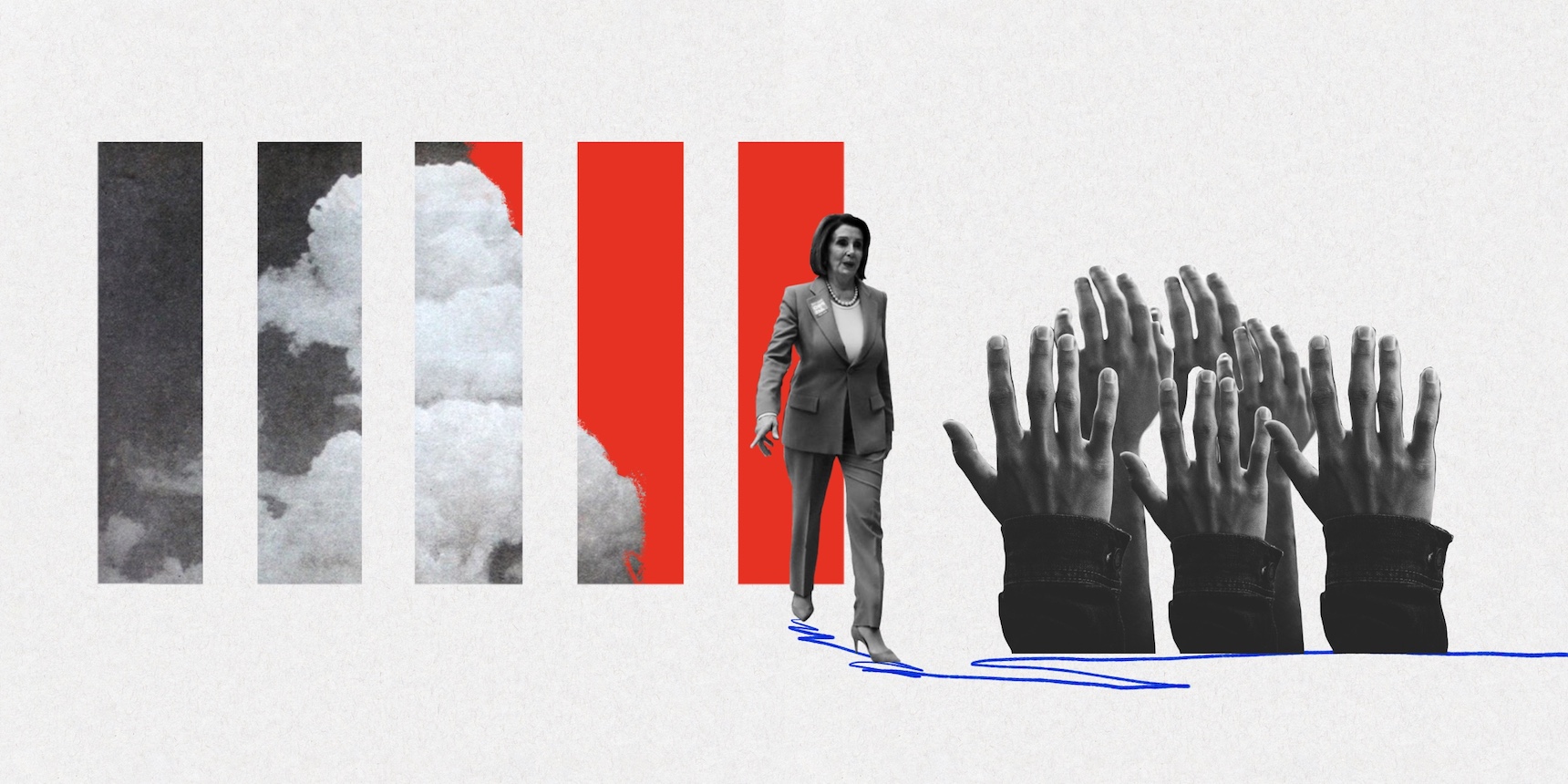
Azerbaijan has made an enormous strategic mistake, Russia has allowed for a sizable power vacuum in the region, and the United States has determined to capitalize on these developments, undertaking a policy pivot in the South Caucasus. At the core of America’s policy pivot are two primary factors: the Biden Doctrine and preservation of Armenia’s democracy. With the collapse of Armenia’s Russia-dependent security architecture, Azerbaijan’s large-scale invasion of Armenia, and Russia’s inability to fulfill its security obligations to Armenia, a precarious and dangerous situation has developed: Russia’s inchoate response to the power vacuum and Azerbaijan’s endeavor to absorb southern Armenia. The former presents an extraordinary opportunity for the United States, while the latter remains an unacceptable and intolerable outcome. The policy pivot, to this end, becomes an extension of the Biden Doctrine: preserve Armenia’s democracy by preserving its sovereignty, while marginalizing Russia and filling considerable parts of the regional vacuum. What does this pivot look like? The U.S. seeks to curtail Azerbaijan’s aggressive behavior, thus enhancing Armenia’s security and the survival of its democracy, while at the same time diminishing Russia’s leverage in the region by dislodging Armenia from Russia’s orbit.
Enter Nancy Pelosi, the Speaker of the U.S. House of Representatives and the highest-ranking American official to visit Armenia, with a straightforward message: the implementation of the Biden Doctrine in the South Caucasus. The Biden Doctrine is defined as the utilization of strategic arrangements to preserve democracies throughout the world against the threat of authoritarianism. This was more precisely articulated at the Summit for Democracy, with three main pillars: combating authoritarianism, fighting corruption, and advancing human rights. Fundamentally, the Biden Doctrine posits that great-power competition is linked to revitalizing the grand strategy of fortifying the democratic world against the encroachment of authoritarianism. This doctrinal thinking has been loudly proclaimed in America’s expansive support for Ukraine, its continuous support for Taiwan, and with developments in the South Caucasus, a burgeoning support for Armenia. It is within this context that America’s policy pivot in the South Caucasus, and Nancy Pelosi’s visit to Armenia, is to be understood, as she articulated the Biden Doctrine upon landing in Armenia: “Our Founders chose democracy over autocracy,” and for “generations we have protected and defended that choice,” and “from the U.S. to Ukraine to Taiwan to Armenia, the world faces a choice between democracy and autocracy – and we must, again, choose democracy.”
To avoid any confusions, the Biden Doctrine fundamentally differs from the neocon Bush Doctrine, which sought to spread democracy throughout the world and reserved the right to use preemptive force to achieve such objectives. The Biden Doctrine is not about spreading democracy, or using force to do so, but rather, it is about preserving democracies, especially when they are threatened by authoritarian states. The underlying core of the Biden Doctrine, in this sense, is democracy preservation, and when a democratic state is threatened by an authoritarian state, to enable and provide support for the threatened democracy.
Azerbaijan’s invasion into Armenia-proper on September 13, 2022, was viewed by the United States as precisely a case of an authoritarian state attacking a vulnerable democracy. Whereas the legal and historical context of the Nagorno-Karabakh conflict remains multi-tiered with both sides, from America’s lens, having legitimate claims, the recent invasion by Azerbaijan into Armenia remains fundamentally devoid of any justification. It is, according to the Biden Doctrine, a flagrant act of aggression by an authoritarian state against a nascent democracy. The shedding of both-sidesism by the State Department, the direct involvement of Secretary Anthony Blinken, and America’s recognition of Azerbaijan as the aggressor reifies this assumption. On September 13, the State Department accused Azerbaijan of “shelling inside Armenia” and demanded that “President Aliyev cease hostilities.” The State Department further instructed Azerbaijan to “disengage military forces,” “pull forces back from the border,” and “cease” endangering civilians. From America’s lens, there was no question as to who remained the aggressor.
After speaking with Prime Minister Pashinyan on two occasions, Secretary Blinken spoke with the PM again on September 15, “offering condolences for the loss of life” and reconfirming the preservation of the ceasefire, which the United States played a major role in securing. Russia’s inability, or presumed unwillingness, to secure a ceasefire remains quite telling and substantiates the growing power vacuum that had developed, only to be quickly filled by America’s brokering of the ceasefire. This underlying development is supplemented by the Russian-led CSTO’s refusal to trigger Article 4 of the security alliance, requiring the use of force to repel the violation of a member state’s sovereignty. Rather, the CSTO chose to send a fact-finding mission, reaffirming the growing power vacuum.
Nancy Pelosi’s arrival, within this backdrop, provided the fertile ground to establish the tenets of the Biden Doctrine in Armenia, with Armenia having lost faith in Russia as a security guarantor, while Azerbaijan stood ready to assault Armenia’s sovereignty. Pelosi’s initial statements were clear indications that her visit, and the agenda itself, was defined by the Biden Doctrine: “I am leading a Congressional delegation to Armenia to highlight the strong commitment of the United States to security, economic prosperity, and democratic governance in Armenia and the Caucasus region. My delegation’s visit to Armenia is a powerful symbol of the United States’ firm commitment to a peaceful, prosperous and democratic Armenia, and a stable and secure Caucasus region.” The interrelationship between “democratic governance” and “security” is robustly confirmed, while the “powerful symbol of the United States’ commitment” to regional security and stability, with the preservation of Armenian democracy at its core, is a clear affirmation that the Biden Doctrine has come to the region.
This was validated by Pelosi’s posture on the large-scale invasion, as she rigidly and unequivocally blamed Azerbaijan, in no uncertain terms, for its “illegal and deadly attack” on “Armenian territory,” while reiterating that the “territorial security and sovereignty of Armenia, the democracy of Armenia, is a value to the United States” and that America will be using “our influence and our leverage” to demonstrate “that Armenian democracy and sovereignty is a priority.” In this context, by prioritizing Armenia’s democracy and sovereignty, and tying the two together, Pelosi is confirming that US-Armenia relations will now be defined by the Biden Doctrine, similar to US-Ukraine and US-Taiwan relations, where the territorial security and democracy of these two states are also the priorities and at the core of America’s support.
Pelosi articulated this posture by tying American ideational values with the global struggle between democracy and autocracy: “Democracy in Armenia is a joy to the world, congratulations on the Velvet Revolution and the recent fair and free elections. We have to enlarge the issue though to include security, what does security in Armenia mean to regional and global security? What does democracy in Armenia mean in the fight between democracy and autocracy, which is going on in the world now? In both cases, it means a great deal. We also want to take democracy and sovereignty in Armenia to a bigger arena when we talk about democracy versus autocracy, security and liberty.” Pelosi’s argument, to this end, is hinged on the underlying American assumption that the preservation of Armenia’s security and democracy is part of the global “fight between democracy and autocracy,” and by “taking democracy and sovereignty in to Armenia to a bigger arena,” the United States is qualifying Azerbaijan’s invasion of Armenia as not simply an inter-state matter, but part of a global trend, where the resilience of democracies is being attacked by autocracies. For the United States, Azerbaijan is on the opposite side of the Biden Doctrine, while Armenia can serve as a “hub of democratic cooperation” in the struggle against the spread of authoritarianism.
The tangibles of America’s Armenia pivot, however, remain the broader subject of inquiry, for unlike Ukraine and Taiwan, where American diplomatic and material support are quantitatively and qualitatively strong, Armenia has yet to understand what the U.S. is offering to provide. The conceptual indicators, as discussed, are quite clear: securing Armenia’s sovereignty and democracy. But how is the United States going to do this, what kind of material and diplomatic support will it be willing to provide, and what should the expectations of Armenian society be?
Armenia remains a member of the CSTO, which inherently limits the scope and magnitude of military assistance and collaboration that Armenia can receive not only from the U.S., but also NATO countries. However, Frank Pallone, speaking on this topic, addressed the elephant in the room by noting that the United States can find a way to work around this “without reference to Russia or the Russian arrangement.” The indication here is two-fold. First, the recognition of the power vacuum is quite clear, as is the fact that the CSTO is purely a paper tiger. Namely, whereas CSTO membership, in the past, was an immediate obstacle to military aid or cooperation, this threshold has been exponentially degraded due to current developments. As such, Pallone confirmed that CSTO membership, in of itself, does not qualify as a basis to deny Armenia potential security support. Second, Armenia need not leave the CSTO to enhance security ties with the U.S., thus giving the Armenian Government flexibility, as opposed to forcing Yerevan between a rock and a hard place.
That being said, expectations of U.S. military support should be severely tempered, and at best, Armenian society can expect primarily the following: financial assistance package, training and collaboration projects, coordination on security issues, and sharing of intelligence. The most acute support that the U.S. will likely offer, however, will be two-fold: one, guide and offer mediation for Armenia to purchase weapons in the open market, and two, give Armenia waivers to purchase weapons from countries that Armenia would otherwise not be able to purchase due to American sanctions. These arrangements, however, are expansive institutional processes, and while they have not existed in the past, there have been two important developments: a recent visit of the Armenian Ministry of Defense delegation to the United States, and Nancy Pelosi’s unscheduled visit to the Ministry of Defense. In the case of the latter, which was not in the Speaker’s agenda and was included after her meeting with PM Pashinyan, Pelosi noted that her discussion with Defense Minister Papikyan entailed a consideration of cooperation within the defense sector.
The more qualitative support that Armenia can expect from the U.S., however, will be in the diplomatic realm, where important precedents have been set in the last week. In this context, while expectations for military assistance need to be mitigated, expectations of diplomatic firepower should be increased. Armenia can expect the following, in various formats and iterations: multi-level and wide-ranging diplomatic pressure on Azerbaijan (from threat of cutting aid to imposing Section 907); diplomatic coalition-building during times of crises, especially coordinating with European partners; international institutional security guarantees, such as supporting Armenia at the UN Security Council, or building coalitions of support for Armenia in international organizations; a framework to incorporate Armenia into America’s broader orbit; and in the most severe of cases, reserve the “nuclear” option of sanctioning Azerbaijan.
While very little precedent exists for gauging the extent and modality of what potential security help will look like, there are, however, sufficient data points to gauge what diplomatic support will look like. As the last week has demonstrated, the positioning of the State Department, the visit of Nancy Pelosi, and the general application of the Biden Doctrine clearly suggest a growing qualitative improvement in diplomatic support. This, of course, does not mean that the U.S. will solve Armenia’s security dilemma, or that the U.S. can guarantee that the incursions by Azerbaijan will stop. But what it does mean is that whereas in the past U.S. diplomatic pressure, with all its tangible resources, was only an extension of Armenian wishful thinking, it is now a reality, and one that Armenia must be strategic and constructive with. The underlying objective is to robustly align Armenia’s security framework with the tenets of the Biden Doctrine, and to structure these arrangements with U.S. diplomatic resources.
For the United States, Armenia is not as important as Ukraine, or as strategically relevant as Taiwan, however, as the Eurasian continent becomes a hub of authoritarianism, Armenia stands out as a strategic hub within the Biden Doctrine. With Europe and America concerned about Georgia as a democratic hub, and as buyers remorse increases with lack of democratic consolidation in Georgia, the value of Armenia exponentially increases for the trans-Atlantic interests. Armenia stands at a labyrinthine crossroads, with very little room for error. The U.S. is offering guidance on how to navigate the labyrinth, but the burden remains on Armenia, and its ability to exercise exceptional strategic acumen.
Also see
Azerbaijan Launches Large-Scale Attack Against Armenia
Azerbaijani Armed Forces launched a major attack on the sovereign territory of the Republic of Armenia at approximately midnight on September 13, 2022. A US-brokered ceasefire came into effect late on the evening of September 14, which continues to hold.
Read moreName the Aggressor
Following Azerbaijan’s latest attack, this time against Armenia proper, international actors are calling on both sides to de-escalate the situation. Bothsidism in this context is ridiculous, tiresome, and shameful. Not naming the aggressor or who is benefiting from violence is not a neutral act. It is not telling the truth.
Read moreListen to the Words of Dictators, Don’t Say We Didn’t Tell You
No analysis, no commentary, just facts: How Azerbaijan’s President Ilham Aliyev ideologically prepared Azerbaijani society for war not only against Artsakh (Nagorno-Karabakh), but also Armenia-proper.
Read moreArmenia’s Impossible Position
For years, the EU did nothing to reign Putin in. Finding an alternative for its energy needs, the EU traded one gas supplier waging a genocidal war of aggression—Russia, with another—Azerbaijan.
Read more





Thank you for a very clearly written analysis of the changing security landscape around Armenia. I would like to add a couple comments;
1. The current dangerous period of the Armenia reminds one of the situation in 1989-1991 when Russia under Gorbachev sided with Azerbaijan and started attacking Armenians in Nagorno Karabakh, and Azerbaijan was blowing up the gas pipeline to Armenia. Armenia was running out of fuel and food. At that time the US stepped in and provided diplomatic and economic support ( including wheat shipments through Turkey) to sustain the nascent democratic republic under President Der Petrossian. Some have argued that Armenia should have gone all the way with the US at that time, but instead reverted back to Russia under presidents Kocharyan and Sargsyan. Now we have come full circle: Armenia again has its back against the wall under a democratically elected government, Russia is siding with Azerbaijan and Turkey, and the US is again coming to lend a hand. How will things play out this time?
2. It is very important to make the Biden doctrine and the US policy towards Armenia bipartisan. American national politics is very fickle and there is a strong strain in the American foreign policy establishment, especially in the Republican party, that is isolationist. There is also another strain that is pro oil and therefore pro Azeri and Turkey. These forces agree with the Putin-Xi-Erdogan world view that all politics is amoral and only serves national interests. Human values are not important. If Trump (or a surrogate) was to come back to the White House then the nascent US-Armenia relationship could go cold again, much to the delight of Turkey.
3. I hope that the Pelosi visit will finally wake up the Armenian government as to the power and potential of the Diaspora. On the other hand, one hopes that the parties of the diaspora have the maturity, wisdom and sophistication to manage this complicated US- Armenia relationship. It would be helpful if the Armenian government reached out to key stake holders and elites and tried to formulate a coherent policy about Armenia’s national and economic security, how to deal with Azerbaijan and Turkey, and how to rearm Armenia.
4. There is clearly a power vacuum and imbalance in the South Caucasus. Since Russia has decided to tilt against Armenia again, and Russia is a weakening power relative to China and Turkey, then Armenia must try to rebalance its security architecture with the US, EU, India and possibly Iran. If the US can revive the democratic forces in Georgia, then may be an Armenia -Georgia democratic axes with US and EU support can stand up to autocratic Turkey, Azerbaijan and Russia.
5. Azerbaijan is clearly alarmed by the US involvement in the South Caucasus and may think that this is the time to have a full scale invasion of southern Armenia and punch through to Nakhichevan, before the US is able to do anything. There is a need for massive diplomatic and military support for Armenia to discourage such a move.
A great read! Thank you!